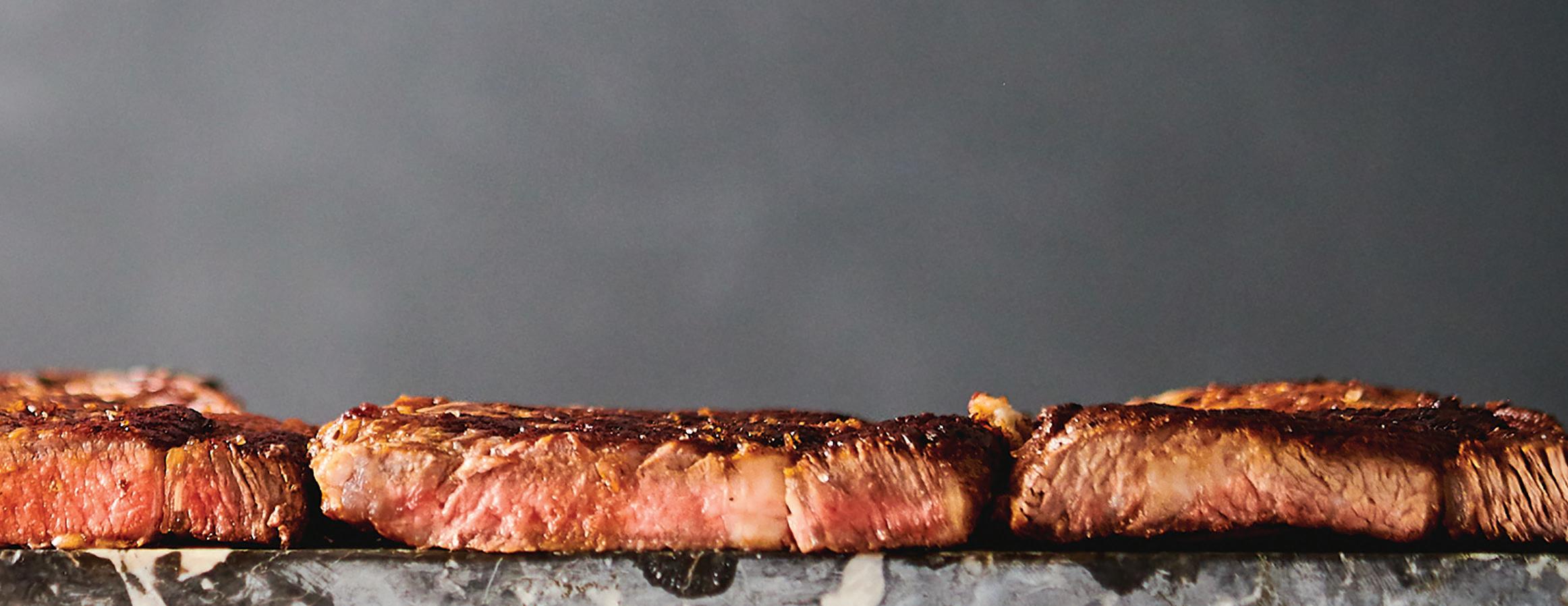
2 minute read
Rouses Magazine - The Steak Issue
Why do you only sell Angus beef?
A USDA grade is a representation of marbling and age, but other things go into how beef tastes. Certain breeds like Angus produce better-tasting meat. Angus beef has more marbling than most, and the distribution of the marbling is even. Quite simply, this is the best steak. Whether you choose USDA Prime, Choice or Select, Angus is going to be a more tender, juicy and flavorful steak.
What is dry aging?
Most of our stores have humidity- and temperaturecontrolled dry-aged beef lockers, where we age USDA Choice Angus Beef for at least 25 days. The dry-aging process draws moisture out of the meat, giving it a richer, beefier flavor. (This is also the reason why dry-aged steaks cook faster than fresh.) Because enzymes break down most of the collagen during the aging process, a dry aged steak isn’t as chewy as fresh. It’s so tender, in fact, that you may not even need a knife.
When should I splurge on Prime?
You really can’t go wrong with any of our steaks, but for true steakhouse quality, our USDA Prime Angus beef ribeye, New York strip and filet mignon are always worth the splurge. The abundant marbling in USDA Prime makes a real difference in the taste and texture of these cuts, and guarantees a steakhouse experience. Why is marbling so important to red meat?
Why is marbling so important to red meat?
Marbling, or fat, doesn’t just add flavor; as it melts during cooking, it also makes your steak richer, juicier and more tender. A well-marbled steak is going to be your best eating experience.
Why do you hand-cut your steaks?
Our butchers hand-cut and hand-trim our steaks to guarantee their quality. With hand-cut, you get just the right thickness and just right the amount of exterior fat, which adds extra juiciness and flavor.
So, what is the best thickness for steak?
It depends on the cut, but thick is almost always better than thin. With a filet, especially a USDA Prime Angus beef filet, you want at least one and a half inches, if not a full two inches. For a ribeye or strip, I’ll cut it somewhere between one inch and one and one half inches so it stands up to the heat, and you can be very precise when it comes to doneness. A thinner steak — less than one inch — is easy to overcook. There are some cuts, like flank and skirt, that are naturally thinner. The trick is to keep the cooking time to a minimum so the heat doesn’t have time to penetrate much further than the surface.










